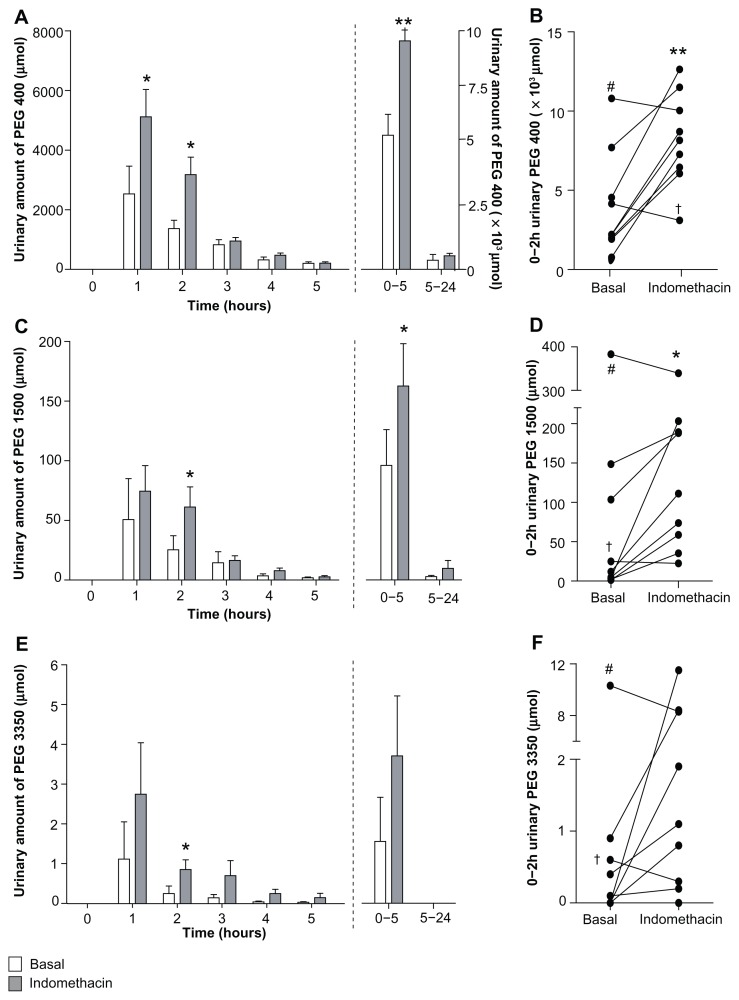Figure 2.
Urinary excretion of PEG probes increases after intake of indomethacin. (A) Urinary PEG 400 excretion is elevated after intake of indomethacin. (B) Individual 0–2-hour urinary PEG 400 excretion from nine healthy individuals in the basal and indomethacin-challenged state. (C) Indomethacin increases urinary excretion of PEG 1500. (D) Individual 0–2-hour urinary PEG 1500 excretion from nine healthy individuals in the basal and indomethacin-challenged state. (E) Urinary excretion of PEG 3350 tends to increase after indomethacin. (F) 0–2-hour urinary PEG 3350 excretion is increased in the majority of volunteers.
Notes: Data are shown as the mean ± standard error of the mean of nine healthy individuals, unless otherwise stated. In two volunteers, indicated as † and # respectively, decreased urinary PEG excretion was observed for each individual PEG probe, while one individual had excessively high indomethacin-induced PEG 3350 excretion in 3-hour and 0–5-hour urine and was therefore not included in Figure 2E. *P < 0.05; **P < 0.01, significantly different from basal (placebo) conditions.
Abbreviation: PEG, polyethylene glycol.

